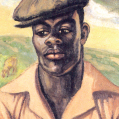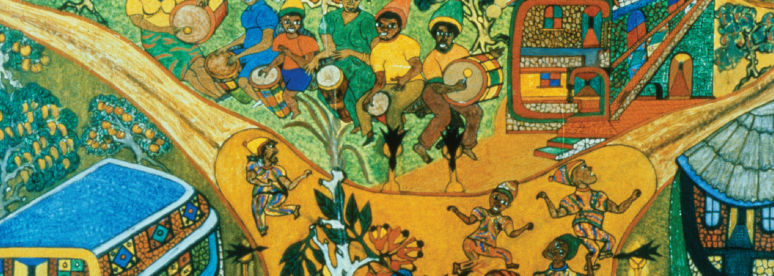PAST EXHIBITION

Artists of the Americas: An Inaugural Celebration
Works of art from the collection and throughout the Americas, representing each member state of the Organization of American States
September 16, 2004 – January 16, 2004
ABOUT THE EXHIBIT
Artists of the Americas is an exhibit that celebrates the inauguration of Dr. Miguel Angel Rodriguez, the new Secretary General of the Organization of American States. It brings together the work of one representative artist from each of the OAS member nations as a symbol of the spirit of integration and the theme of “unity in diversity” that is at the heart of the inter-American system. The rich cultural diversity of the region is naturally reflected in the artistic expression of its artists.
Drawn primarily from the museum’s permanent collection, the exhibit also provides a glimpse at the active role the OAS has played in assuring that artists of the hemisphere have opportunities to develop and share their talents. The OAS exhibit program dates back to 1940 and, over the years, has presented artists and movements that have reflected visual arts developments in member countries at particular moments in time. The exhibit program has in turn significantly shaped the museum’s permanent collection, since many of the works in the collection were acquired when the artist first exhibited at OAS. For this occasion, the Inter-American Development Bank and the World Bank have joined with the museum in this celebration of the arts of the Americas through loans from their collections. Their cooperation is representative of the common goals that our institutions share and the strong belief that a commitment to cultural programs strengthens social and economic advancement in our Hemisphere. The OAS Missions of Antigua and Barbuda, Dominica, Grenada, Saint Kitts and Nevis, Saint Lucia, and Saint Vincent and the Grenadines have also provided loans for this celebration.
In selecting the works for this exhibit, the focus has been on artists who have iconic significance for the countries they represent, either in the images depicted or in the key role the artist has played as educator or innovator. The works span most of the 20th century, from 1909 to 1999, with emphasis on the early years of the museum collection and exhibit program. Although these diverse expressions often identify specific cultural contexts, they are, at the same time, universal in their power to communicate aesthetic and spiritual concerns across geographic and language borders. They provide insight to the history, traditions, and cultural aspirations of the region.

